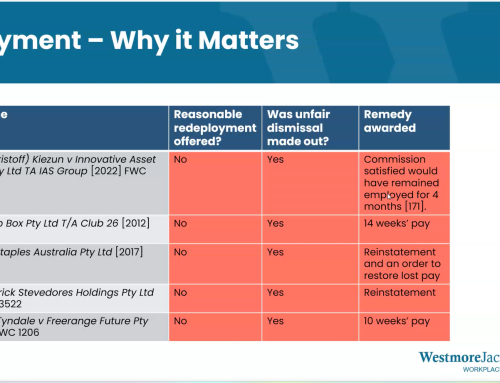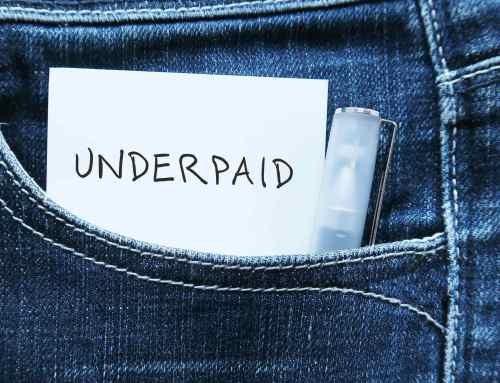
By now, many businesses will be preparing for reduced JobKeeper payments which start from 28 September 2020.
During the first extension period of the JobKeeper scheme, from 28 September 2020 to 3 January 2021, JobKeeper payments will be reduced to $1,200 or $750 per fortnight depending on the hours worked by eligible employees. Payments will reduce further in the second JobKeeper extension period from 4 January 2021 to 28 March 2021.
Although businesses have known about the extension of the JobKeeper scheme and reduced payments for some time, the legal framework behind the Government’s announcements has recently been put in place. The Coronavirus Economic Response Package (Payments and Benefits) Amendment Rules (No. 8) 2020 (Cth) commenced on 16 September 2020 and amends the existing JobKeeper scheme rules (“Amended Rules”). The Amended Rules provide details of the extended JobKeeper scheme which may help businesses weather the storm until March 2021.
This article looks at the Amended Rules and what they mean for employers seeking to access JobKeeper payments over the coming months.
New decline in turnover test
Payments for JobKeeper fortnights beginning on or after 28 September 2020 will be subject to a new eligibility test for decline in turnover.
Businesses must now demonstrate that their actual GST turnover has declined by the relevant percentage (15%, 30% or 50%) for the quarter ending 30 September 2020. This decline in turnover is relative to the comparable quarter for 2019. For the second JobKeeper extension period commencing 4 January 2021, businesses will need to show a decline in turnover for the quarter ending 31 December 2020.
The new actual decline in turnover test must be satisfied for a business to be eligible for payments for each of the two JobKeeper extension periods. The original turnover test (referring to projected decline in GST turnover) continues to operate alongside the new test. For entities that already qualified for JobKeeper before 28 September 2020, this original test will have already been satisfied.
Where a business ceases to qualify for JobKeeper payments because they have not met the decline in turnover requirements for the period ending 30 September 2020, they can requalify for the scheme where they meet the actual turnover test for the period ending 31 December 2020.
Which payment rate applies?
For fortnights starting from 28 September 2020, the rate of JobKeeper payments will depend on the number of hours employees worked during a prescribed period. This period is called the “reference period”.
The higher JobKeeper payment will apply to an eligible employee whose total hours of work during any reference period was 80 hours or more. The lower payments will apply to an employee that worked less than 80 hours during the reference periods.
There are two reference periods that can apply to an employee:
- The 28-day period ending at the end of the pay cycle that finished immediately before 1 March 2020; or
- The 28-day period ending at the end of the pay cycle that finished immediately before 1 July 2020.
The higher payment applies if the 80-hour threshold is met for either reference period. Employers do not have discretion to choose which period applies.
This means that for an employee paid on a fortnightly basis, a business may simply need to review two pay cycles during February 2020 and June 2020 to see if the employee worked 80 hours.
Where an employee’s pay cycle is longer than 28 days, the Amended Rules allow an employer to use a pro rata proportion of the total hours of work for that employee to determine whether the higher or lower JobKeeper payment applies.
80-hour threshold for employees on leave
Businesses may question whether an employee has met the 80-hour threshold if the employee was on leave during a reference period.
The Amended Rules are clear that where an employee is on paid leave or on a paid absence from work on a public holiday during a reference period, these hours will count towards the 80-hour threshold. This means that employees who were on annual leave or paid personal leave are not precluded for eligibility for the higher JobKeeper payments.
The Amended Rules are silent about employees that were on unpaid leave during the reference periods. However, the Commissioner of Taxation has the power to determine, by legislative instrument, that an alternative reference period will apply to specified classes of individuals.
The explanatory statement to the Coronavirus Economic Response Package (Payments and Benefits) Amendment Rules (No. 8) 2020 indicates that this power is likely to be applied to certain employees on unpaid leave. For example, employees who took unpaid leave during a reference period, where this was not representative of their usual hours of work, may qualify for the higher payment (such as employees receiving paid parental leave pay or workers’ compensation).
Notification requirements for higher or lower rates
Businesses will need to notify the Australian Taxation Office (“ATO”) whether the higher or lower JobKeeper rate applies to their eligible employees.
This notification requirement is a condition of payment under the Amended Rules. An employer will not be eligible for JobKeeper payments for fortnights beginning on or after 28 September 2020 until a valid notification is made.
Businesses must then notify each employee about which JobKeeper payment rate applies to them as communicated to the ATO. This notification to employees must be in writing and must occur within seven days of the business advising the ATO of the applicable JobKeeper payment rate.
Conclusion
Employers should ensure they understand how changes to the JobKeeper scheme will affect them from 28 September 2020, including the extension of industrial powers (please refer to our earlier article). Reduced JobKeeper payments and tiered rates may require adjustments for some businesses.
With the right advice and support, employers can plan for the coming 6 months on JobKeeper and the future beyond the scheme’s end.
Adam Colquhoun, Principal
This article is general information only. It is not legal advice. If you need legal advice, please contact us.





